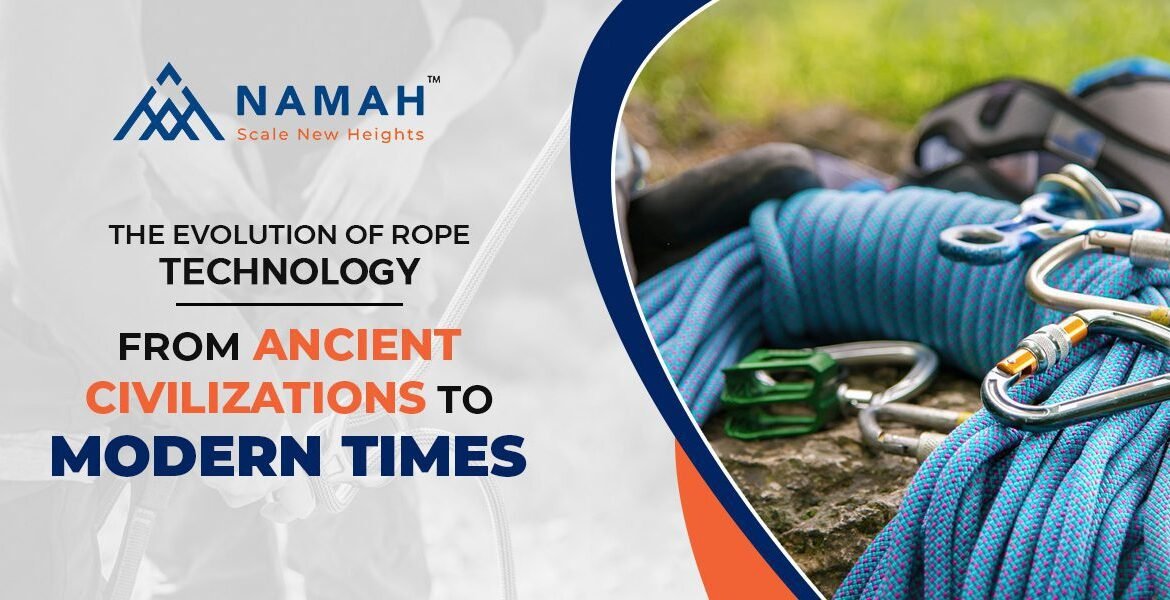Introduction to Historical Rope Uses
Ropes have played a pivotal role in human development, utilized across centuries and civilizations for a myriad of purposes—from maritime endeavors to construction, and even as instruments of capital punishment. Let us explore the historical evolution of rope technology, highlighting how its diverse applications have influenced societies and industries throughout history.
The Origins of Rope-Making
Rope-making is an ancient craft, with evidence dating back to prehistoric times. Early ropes were made from natural fibers such as hemp, sisal, and animal hair, which were twisted and braided to form strong, durable lines. These ropes were essential for the construction of primitive tools and shelters, as well as for hunting and trapping.
Key Developments in Ancient Civilizations
Ancient Egyptians were among the first to use ropes extensively, not only in their daily lives for agriculture and pottery but also in monumental constructions like the pyramids. Ropes were used to haul massive stone blocks and to operate complex pulley systems, demonstrating the early integration of rope technology in engineering and architecture.
Ropes in Maritime Applications
As civilizations expanded, the use of rope became crucial in navigation and maritime trade. The strength and flexibility of ropes made from papyrus and later hemp allowed for the development of advanced sailing technologies in ancient maritime cultures including the Phoenicians and Greeks.
The Role of Rope in Ship Rigging
Ropes were integral to the rigging of ships, used for securing masts, sails, and anchors. The evolution of rope technology was synonymous with the advancement of maritime exploration, enabling ships to sail further and more efficiently, thus broadening the horizons of the known world.
Innovations in Nautical Rope-Making
The demand for stronger and more resilient ropes led to innovations in materials and techniques. The introduction of tar-coated hemp in the Middle Ages improved the water resistance and durability of ropes, significantly impacting the longevity and safety of maritime ventures.
Rope Technology During the Industrial Revolution and Its Global Impact
The Industrial Revolution: A Turning Point for Rope Manufacturing
The Industrial Revolution marked a significant turning point in the history of rope-making. The transition from handmade to machine-produced ropes revolutionized the industry, leading to massive increases in production efficiency and rope quality.
The Introduction of Steam-Powered Machinery
Steam-powered machinery in the 19th century allowed for the rapid production of ropes, transforming the process from a labor-intensive craft to a high-volume industrial operation. This mechanization was crucial in meeting the growing demands of burgeoning industries such as shipping, mining, and construction.
Impact on Global Trade and Expansion
The availability of stronger and more reliable ropes played a critical role in the expansion of global trade networks. Ships could now venture further with enhanced safety, supporting the colonization and exploitation of distant lands. Ropes also facilitated the development of infrastructure in these new territories, including bridges and railways.
Advances in Material Science
The industrial era also saw significant advances in the materials used for rope-making. The introduction of man-made fibers in the late 19th and early 20th centuries offered new properties such as increased strength, resistance to rot, and durability.
From Natural to Synthetic Fibers
The shift from natural fibers like hemp and sisal to synthetic materials such as nylon transformed the rope industry. Introduced in the 1930s, nylon was the first synthetic fiber to be used in rope-making, providing superior strength, elasticity, and resistance to environmental factors.
The Role of Synthetic Ropes in Modern Industries
Synthetic ropes quickly became popular in various applications, from fishing and climbing to aeronautics and space exploration. Their ability to maintain integrity under extreme conditions made them ideal for these advanced applications, pushing the boundaries of what was previously possible with natural fiber ropes.
Ropes in Construction and Execution: Historical and Modern Perspectives
The Critical Role of Ropes in Construction
Ropes have been indispensable in the construction industry for centuries. From the building of ancient monuments to modern skyscrapers, ropes have facilitated the lifting, pulling, and securing of structural components.
Engineering Marvels Facilitated by Rope
Historically, ropes were crucial in the construction of architectural wonders such as the Roman aqueducts and medieval cathedrals. These projects relied on complex pulley systems and hoisting techniques that were only possible with the use of strong, durable ropes.
Modern Construction Techniques
In contemporary settings, ropes continue to play a vital role, especially in high-rise construction and bridge building. Advances in rope technology, particularly with synthetic fibers, have improved safety standards and operational efficiency, enabling the handling of heavier loads and the execution of more complex construction tasks.
Ropes in the Realm of Law Enforcement and Punishment
Beyond their utility in construction and navigation, ropes have also had a darker role in law enforcement and capital punishment, particularly in the form of hangman’s nooses.
Historical Use of Ropes in Executions
Rope made from hemp was commonly used for executions from the Middle Ages through to the early 20th century. The hangman’s noose, a loop that tightens under the weight of the person, was designed to be quick and effective, albeit a grim application of rope technology.
The Evolution of Ethical Standards
Over time, the use of ropes in executions has declined, reflecting changes in ethical standards and legal frameworks regarding capital punishment. Today, the focus on humane methods of law enforcement has largely eliminated the use of ropes in this context.
Cultural Significance of Ropes Across Civilizations
Ropes as Symbols in Cultural and Religious Practices
Ropes have not only been practical tools but also potent symbols in various cultures and religious rituals around the world. Their significance in symbolic bindings, spiritual ceremonies, and communal activities highlights their integral role in the human narrative.
Ropes in Religious Ceremonies and Rituals
In many cultures, ropes symbolize ties that bind spiritual realms to the earthly or represent life’s interconnectedness. For example, in Japanese Shinto rituals, ropes are used to demarcate sacred spaces or as offerings to deities, embodying purity and protection.
Community and Tradition: The Role of Ropes in Festivals
Ropes also play a central role in numerous traditional festivals, where they symbolize unity and strength. The “Tug of War,” a popular game in both Eastern and Western cultures, uses rope as a central element where teams pull against each other, symbolizing the struggle between opposing forces, be it seasonal changes or historical conflicts.
Preserving Rope-Making Traditions
Despite technological advancements, traditional rope-making crafts are still practiced in many parts of the world, preserving ancient techniques and promoting cultural heritage. These traditional methods, often seen in artisanal communities, serve as a living history of the craft of rope-making.
Educational and Cultural Preservation Efforts
Museums and cultural heritage programs often feature rope-making workshops and demonstrations to educate the public about the historical importance of ropes and their production. These initiatives help keep the traditional skills alive and connect people to their cultural past.
Impact on Modern Art and Craft
Artists and craftsmen continue to explore the medium of rope in contemporary art installations and crafts, drawing on its historical and cultural resonances to create meaningful works that speak to shared human experiences across time.
Namah Ropes is renowned for its production of high-quality ropes, harnesses, and slings, catering to diverse industries with a focus on safety and innovation. The company leverages advanced materials and modern manufacturing techniques to ensure its products meet rigorous safety standards and performance criteria. Namah Ropes is committed to sustainability and customer satisfaction, continually adapting its offerings to meet the evolving needs of its global clientele.




